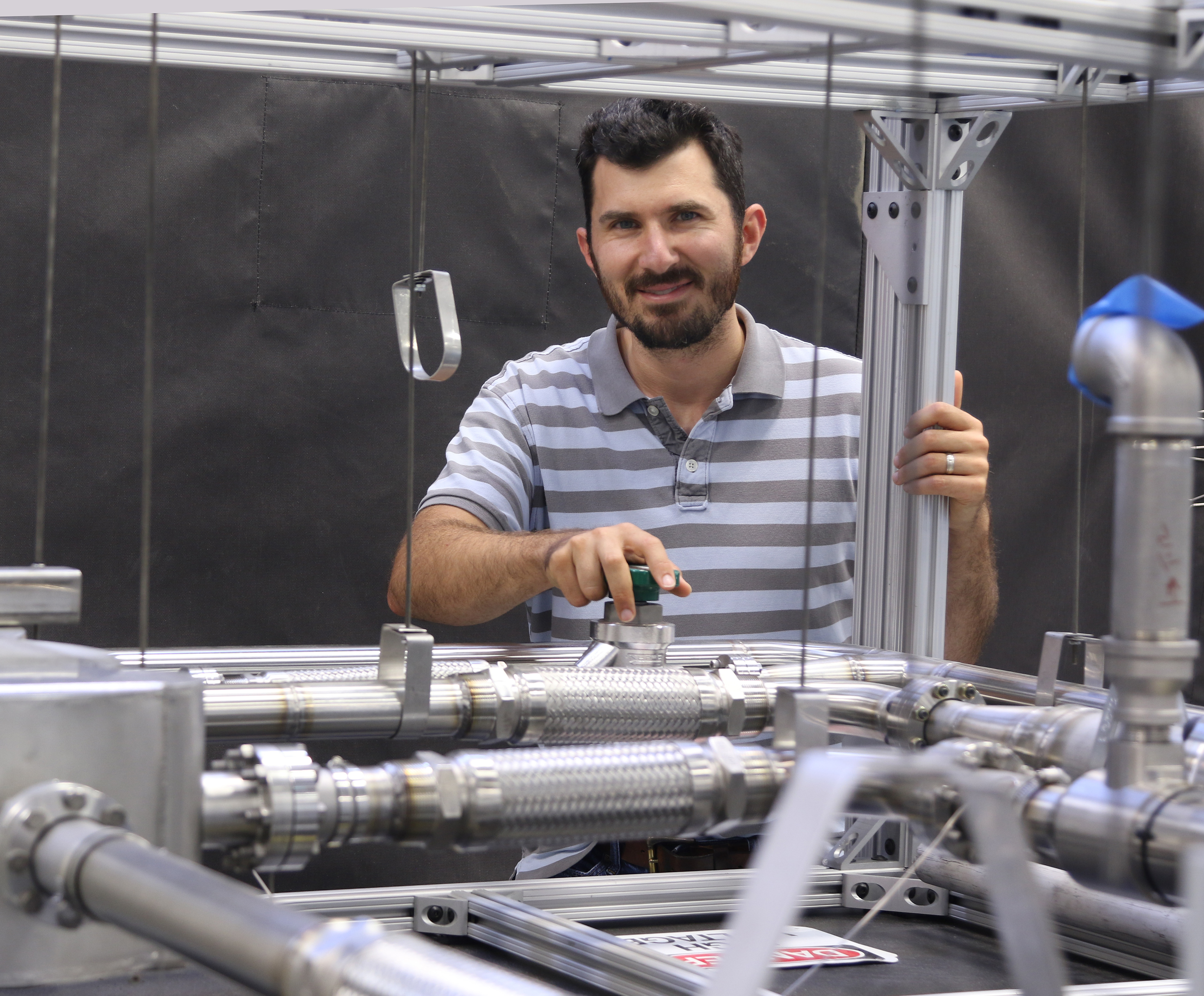Brayton Cycle Power Generation in Space
A unique aspect about working at Creare is the exciting applications that we encounter on a daily basis. Whether I’m working on a stress analysis or evaluating drag losses, it’s likely to impact a component that could eventually find a home on an aircraft carrier or deep space probe. One of the research interests that attracted me to a career at Creare is the application of small, high speed rotating machinery to space power and thermal management.
Brayton Cycle Has Many Advantages
A leading example is closed-loop Brayton cycle technology, which has deep heritage at Creare, dating back almost 40 years. Though Creare has long built small high-speed turbomachinery and compact heat exchangers for cryocoolers—most notably the NICMOS Cryogenic Cooler aboard the Hubble Telescope—we have in more recent years transitioned this technology to projects focused on thermal power conversion. Brayton power converters are attractive for space power because they have high efficiency and specific power. They also consist of discrete components that can be packaged to fit optimally with other subsystems. Their continuous gas flow can interface directly with remote heat sources and heat rejection surfaces without additional heat transfer components and intermediate flow loops.
One promising use is in providing electricity from radioisotope power for long endurance robotic missions in deep space, where solar panels aren’t an option. NASA’s current technology for radioisotope power relies on thermoelectric generators which have no moving parts. But thermoelectric generators operate at relatively low efficiency of 6%. For an ongoing multi-year NASA-funded project we are designing, building, and testing small-scale Brayton power converter, with a projected efficiency of 26%. The substantial improvement in efficiency comes at a cost of increased risk due to high speed rotating parts. This converter is expected to generate approximately 350 We, spinning at 164,000 rpm. However, we mitigate this risk by using our proven flexure-pivot tilt-pad gas bearing technology, ensuring no mechanical contact during operation.
Recuperator Performance is Key
Aside from the turbomachinery, another critical component of the converter is the microtube recuperator. This unit is more than 98% thermally-effective and features 12,000 laser-welded stainless steel tubes in parallel. The development and qualification of this technology was a separate Creare-led, NASA-funded effort. Creare’s decades-old commitment to micro-turbomachinery and compact heat exchanger technology ensures a steady stream of fascinating projects, and I look forward to the new applications we will develop in the coming years.
Thomas Conboy holds a B.S. in Engineering Physics from the University of California, Berkeley, and an M.S. and Ph.D. in Nuclear Engineering from MIT. After graduation, he worked at Sandia National Laboratories, leading several projects in the area of advanced power conversion systems for terrestrial and space power. At Creare, his research interests include Brayton and Rankine power conversion cycles, two-phase thermal management systems, and vapor compression systems.
This story was featured in the Fall 2018 edition of Creare’s People & Technology newsletter.
